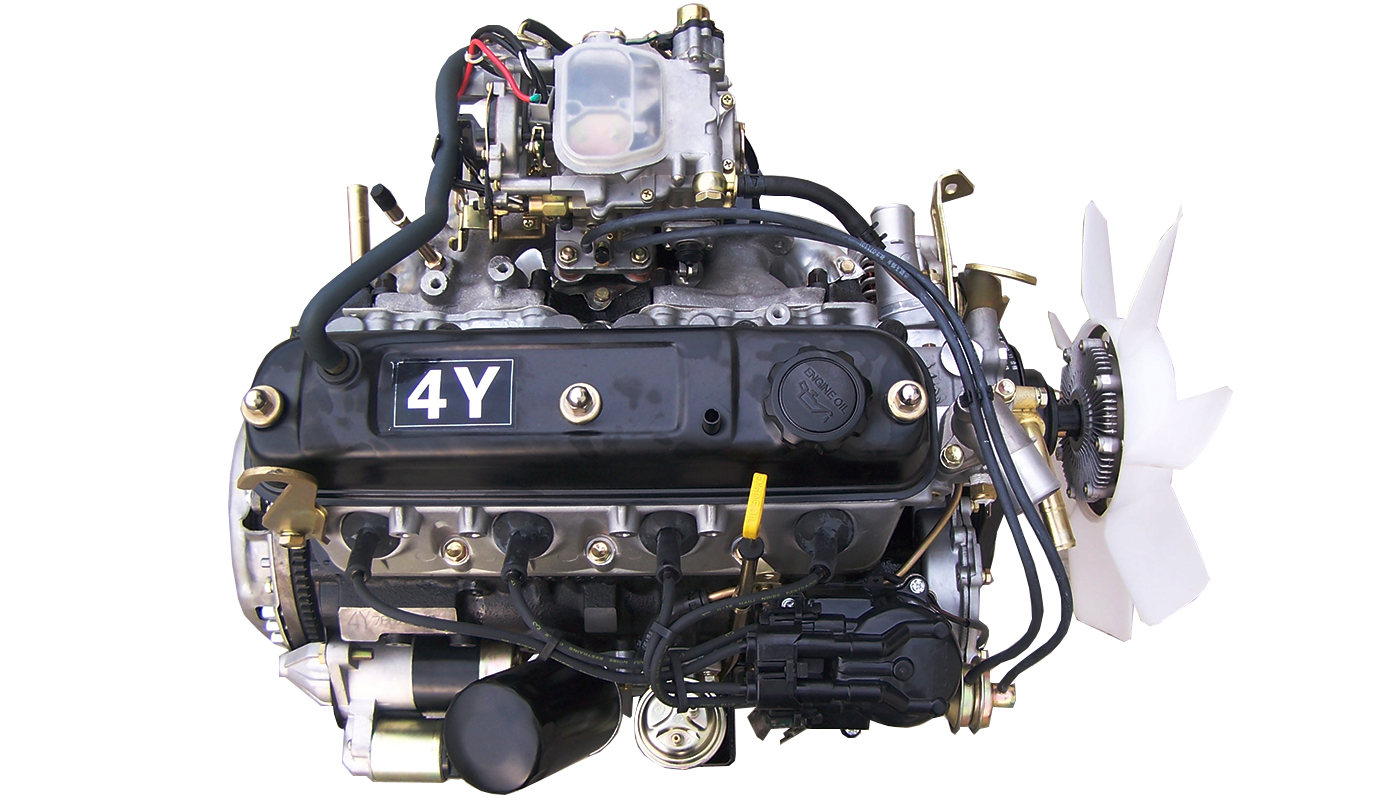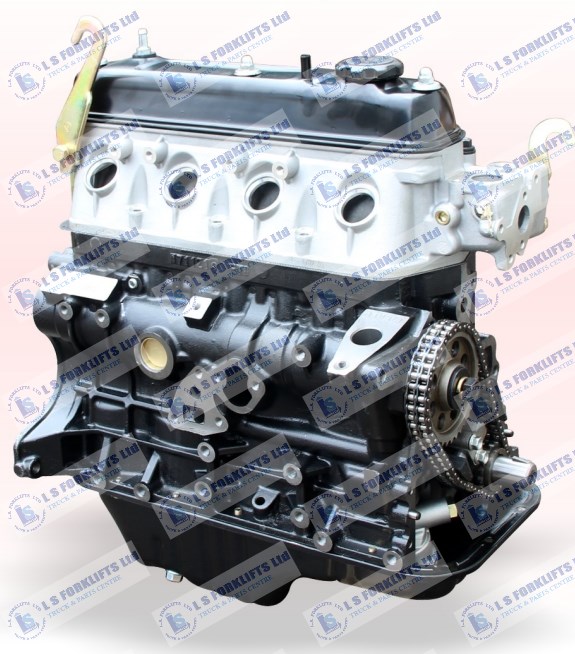Top Modifications to Enhance the Performance of Your 4Y Engine
The Ultimate Overview to the Engine: Secret Insights for Every Automobile Fanatic
Understanding the engine is fundamental for any vehicle lover, as it functions as the heart of the car and determines its efficiency. This guide supplies a complete evaluation of engine anatomy, types, and the technicians behind their operation, consisting of the ingenious modern technologies that are reshaping the vehicle landscape. It highlights the essential nature of maintenance techniques that can significantly impact an engine's life-span. The complexities of engine characteristics and the most recent advancements in innovation present concerns that merit additional exploration. What might these insights expose regarding the future of vehicle design?
Makeup of an Engine
Recognizing the makeup of an engine is crucial for any auto fanatic aiming to dive much deeper right into auto technicians. An inner combustion engine mainly includes several vital components that work in unison to transform gas into power.
At the heart of this system lies the cylinder block, which houses the cyndrical tubes where burning happens. Piston activity within these cyndrical tubes is helped with by the crankshaft, which equates linear activity right into rotational energy. In addition, the camshaft plays an essential duty in regulating the opening and closing of the engine's valves, ensuring correct air-fuel blend intake and exhaust gas expulsion.
Various other essential parts consist of the fuel system, which provides the engine with the needed fuel, and the ignition system, in charge of initiating combustion - 4y engine. The air conditioning and lubrication systems are likewise integral, preserving ideal operating temperatures and lowering friction, specifically
Engine Types and Configurations
A varied range of engine kinds and arrangements exists, each offering one-of-a-kind advantages and downsides tailored to various driving requirements and preferences. One of the most typical engine types include inline, V, level, and rotary setups.
Inline engines, featuring cylinders arranged in a single line, are known for their simplicity and performance. They are frequently located in small lorries, providing an equilibrium of power and economy. V engines, identified by their two banks of cyndrical tubes prepared in a V form, give higher performance and smoother procedure, making them preferred in sports and luxury vehicles.
Level engines, or fighter engines, have horizontally opposed cylinders, which contribute to a lower center of mass, boosting vehicle stability. These are frequently seen in brands like Subaru and Porsche.
Rotating engines, although much less common, use a special design with a triangular rotor and offer high power-to-weight proportions. They master light-weight and small applications, mainly seen in Mazda lorries.
Each engine kind serves certain efficiency characteristics, weight distributions, and gas performances, ensuring that cars and truck lovers can pick the ideal engine configuration to match their driving design and car requirements.

How Engines Function
Engines, no matter their kind or setup, operate fundamental principles that govern their performance and efficiency. At their core, engines convert fuel into power via dig this a series of controlled explosions or compressions. This process generally involves 4 major strokes: intake, exhaust, power, and compression.
Throughout the consumption stroke, the engine attracts in a mixture of air and gas. The compression stroke adheres to, where the blend is compressed in the cylinder, enhancing its temperature level and pressure. In the power stroke, a spark fires up the compressed combination (in gas engines) or the mix fires up spontaneously (in diesel motor), causing a fast growth of gases that presses the piston down. Lastly, the exhaust stroke expels the invested gases from the cylinder.
The effectiveness of an engine is affected by numerous variables, including the layout of the burning chamber, the kind of fuel utilized, and the precision of the engine's elements. Recognizing these fundamental concepts is critical for automobile fanatics that seek to appreciate the detailed mechanics behind their automobiles, as well as for those aiming to improve efficiency via adjustments and adjusting.
Innovations in Engine Innovation
In recent times, innovations in engine technology have substantially transformed the auto landscape, enhancing both performance and environmental sustainability. Among the most significant advancements is the growth of turbocharging and supercharging, which permits smaller sized engines to create higher power results without sacrificing fuel performance. This has resulted in a surge in the popularity of downsized engines, providing manufacturers with the capability to fulfill rigorous exhausts policies while keeping performance requirements.
Furthermore, crossbreed and electric powertrains are improving the engine paradigm. Hybrid systems combine internal combustion engines with electric motors, maximizing gas intake and lowering discharges. Completely electric vehicles (EVs) remove the burning engine altogether, depending on advanced battery modern technology to deliver instantaneous torque and remarkable velocity.
Additionally, the assimilation of expert system and device knowing in engine management systems permits for real-time optimization of efficiency specifications, enhancing efficiency and responsiveness. Innovations such as variable shutoff timing and direct fuel shot additionally fine-tune combustion processes, making best use of power outcome while reducing waste.
As the automotive industry remains to evolve, these technologies in engine modern technology will certainly play an important role in forming the future of check out here mobility, focusing on both performance and sustainability.
Maintenance Tips for Lovers
Keeping an engine is as important as the technologies that enhance its efficiency. Normal upkeep not only extends the life of your engine however likewise makes sure ideal efficiency.
Examine and replace air filters regularly to make certain appropriate air movement, which is crucial for burning effectiveness. A stopped up air filter can lead to reduced performance and increased fuel usage. Monitor the coolant levels to prevent overheating, and change coolant according to the service routine. 4y engine.

Final Thought
In final thought, a comprehensive understanding of engine composition, kinds, and mechanics is important for automobile enthusiasts. Regular upkeep practices, consisting of oil changes and air filter checks, are vital for making certain optimum engine capability and long life.

Engines, regardless of their kind or arrangement, run on essential concepts that regulate their performance and efficiency. In the power stroke, a stimulate stirs up the pressed mix (in fuel engines) or the mixture stirs up automatically (in diesel engines), resulting in a fast development of gases that presses the piston down.In recent years, improvements in engine innovation have considerably changed the automobile landscape, boosting both efficiency and environmental sustainability.